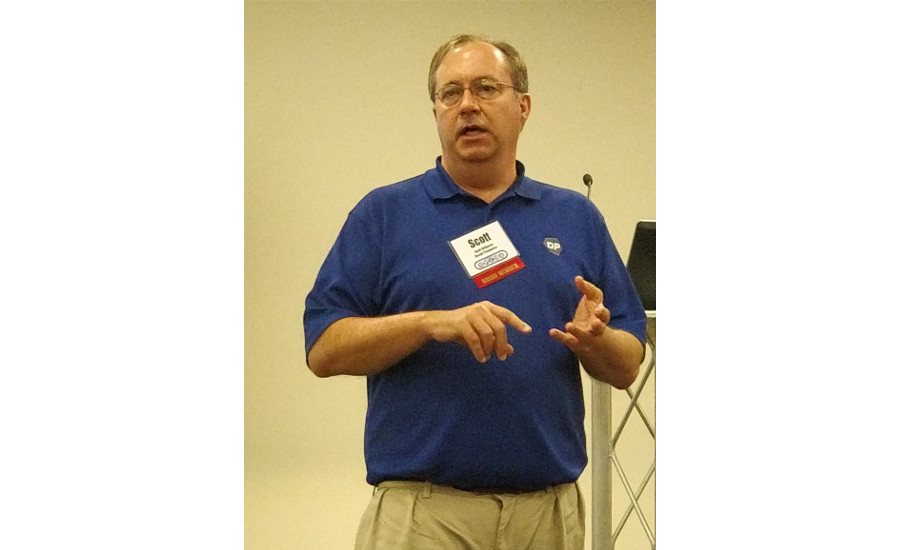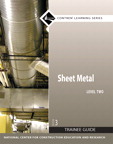NEW ORLEANS — In a few years, making ductwork may be as simple as pressing a button on a 3-D computer. Uh oh.
That might not have been the vision that members of the Spiral Duct Manufacturers Association, a group made up of companies that fabricate specialty ductwork and the machinery necessary to create it, had wanted to hear. But it was the message that futurist and author Jack Uldrich brought here April 19-21 for the group’s annual meeting.
Uldrich is a former lobbyist and Minnesota state government official who has spent the last 15 years talking and writing about where he sees the world heading.
Like many other people who talk about the future, Uldrich opened his April 20 presentation discussing the pace of change. The idea that technology is rapidly changing the world is not new, he said. To prove his point, he showed a black-and-white picture of Fifth Avenue in New York City in the early 1900s. The traffic was exclusively horses and buggies. In a photo from the same spot less than 10 years later, it was overwhelmingly cars. Few would have predicted such a disruption to the transportation industry.
With the rise of computers and printers that can create working, full-size three-dimensional models, it’s possible that ductwork fabrication won’t take place using sheet metal machinery as contractors know it today, he said.
“I don’t know what the city of the future will mean for your industry as we start to build things differently, but there could be a lot of opportunity, Uldrich said.
Manufacturing costs will likely decline.
“In a world of data, you’re going to be able to compete really effectively,” he said. “But you’re going to have to collect the data.”
Uldrich is a proponent of scheduling what he calls “think weeks” — time off to just ponder the future and what it might mean for your business. If that’s too long — and Uldrich acknowledged many people would say it is — even 15 minutes is better than nothing.
Keeping it clean
Following Uldrich’s talk, the role of antimicrobial coatings in HVAC construction was covered in a presentation by Scott Witherow, a vice president with Design Polymerics, a maker of coatings, sealants and green HVAC products.
Witherow said the market for antimicrobial coatings, which are germ-fighting chemicals applied to duct typically before installation, is increasing. Its use is especially popular where indoor air quality demands are high, such as hospitals and other health care facilities.
“You will notice most veterinary facilities now require antimicrobial coatings on the inside of their ductwork,” Witherow said.

Design Polymerics Vice President Scott Witherow says antimicrobial coatings are being specified more in ductwork installation.
Many building codes, as well as architects, now expect antimicrobial ductwork in their buildings. This trend scares some sheet metal contractors, Witherow said, who avoid bidding on projects that require antimicrobials. That presents an opening for others.
“When people get scared, there is an opportunity to make some money,” he said.
In an industry that depends on steel for many of its ductwork products, the tariffs on steel and aluminum recently imposed by the Trump administration has many people concerned. SPIDA brought in Chris Billman, a market research analyst at Majestic Steel USA in Cleveland to explain the current state of the market.
A family owned steel supplier, Majestic counts a large number of HVAC industry companies as part of its customer base.
The good news is: Billman doesn’t see the tariffs as undoing the strong construction market the HVAC industry currently enjoys. The bad news? He doesn’t see steel prices, which have risen more than 25 percent in some cases, declining anytime soon. Supplies remain tight, even for steel from countries without the tariffs, although Billman said more countries may be able to secure exemptions to the levies.

Chris Billman, a market research analyst at Majestic Steel USA, speaks to SPIDA members about the recently imposed tariffs on steel and aluminum. He said steel market supplies remain tight.
“I expect as other countries apply for exemptions, you’ll see something similar (to South Korea) with quotas,” he said.
Countries currently exempt from the 25 percent tariff on steel and 10 percent on aluminum include Canada, Mexico, Brazil, Australia and the European Union. Manufacturers of items that use steel are currently seeking product-specific exemptions to the tariffs.
The White House hopes that the tariffs will get domestic steel mill utilization rate back to 80 percent — a level that has not been seen in over a decade, Billman said.
If any SPIDA members are having trouble getting the domestic steel or aluminum they need, Billman pointed out they can still go elsewhere.
“These tariffs don’t preclude you from bringing any product in,” he said. “There will just be a tariff.”











